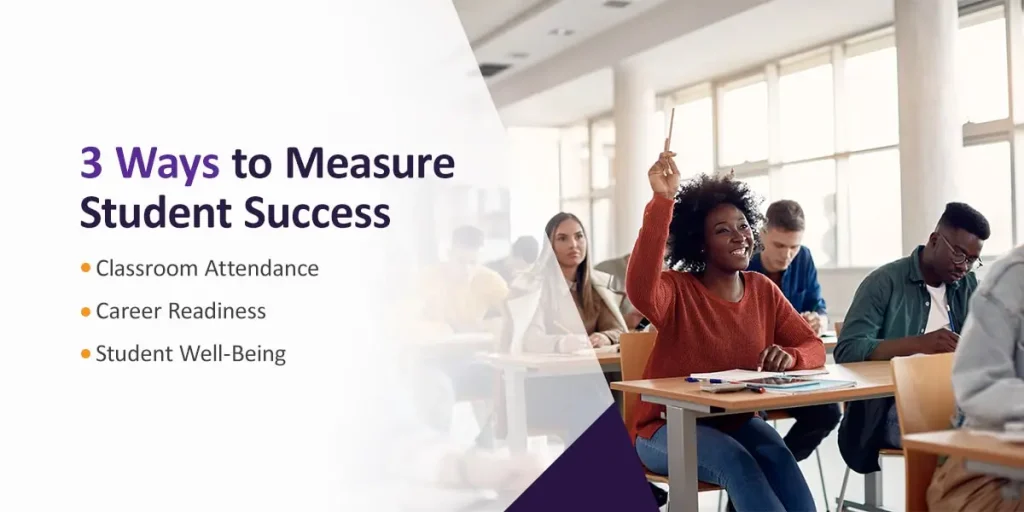



As an administrator, you have firsthand insight into today’s college landscape. Students are eager and motivated but are struggling with more health and financial-related stressors than ever before. As educational systems have changed with evolving technology and workforces, so has the idea of a successful student.
Student success goes beyond high marks, test scores, and graduation rates. In today’s higher education institutions, administrators must consider the whole picture, including institutional statistics and retention rates, classroom performance, career readiness, and each student’s holistic wellness.
One metric for identifying student success is to explore institutional statistics, including student graduation rates, degree attainment, and retention rates. Those numbers have shifted in recent years, with more than a million students dropping out of college each year and overall enrollment down more than 600,000 students over a 12-month period.
Four-year universities aren’t the only ones seeing these changes — only 62% of students enrolled in fall semester courses at a public two-year community college in 2018 were still enrolled in a college program one year later.
Are these figures a true reflection of university and community college student success or a facility’s overall effectiveness as an educational institution? Many factors are at play in declining college rates, including the increased availability of more nontraditional educational options for adults.
It’s time to shift which student success factors administrators consider as part of their institutional analysis to get a true understanding of student performance and well-being.

One accurate way to analyze institutional effectiveness involves students’ career readiness, including skills and general subject matter competency to determine student success. This career readiness should not be at the expense of student well-being. In fact, all aspects of student well-being should be another metric for measurement. Classroom attendance may offer opportunities for early intervention and success forecasting.
Reports have linked student absenteeism with gaps in academic performance, but tracking class-specific attendance data can be challenging for schools with large classes.
A student’s career readiness includes their practical skills, competency assessments, internships, lab work, and similar aspects. Career readiness also includes:
Use early warning systems like diagnostic reports and data analysis to measure factors affecting student success in college and how each factor impacts progress toward career readiness. Examples include standardized testing, capstone projects, and thesis work.
Your administration should strive for consistency in all areas to avoid confusion and promote student success. Start with a strong, easily understood set of standards and communicate those to professors and students for each discipline and degree program.
Physical illnesses — like colds and influenza, disorders, and addictions — are hard to combat at an administrative level. In most cases, the best thing you can offer students is a free-to-use, on-site student wellness center with a staffed nurse and access to over-the-counter medications and help arranging doctor’s appointments or emergency care.
One rising complication colleges should create a plan for is mental health. Consider these statistics about students’ mental well-being:
With such alarming figures, what can administrators do to help students stay mentally healthy? A survey among students from The Jed Foundation showed the usefulness of specific campus efforts:
Make an effort to offer students flexible counseling options, including in-person and virtual visits. Implement campus-wide outreach programs like community support groups and administrative check-ins to help identify struggling students and offer guidance and further resources.
Achieve student success by implementing free, consistent strategies for learners enrolled part-time and full-time. Use these guidelines and suggestions:

Contact Watermark today to learn how our Student Success & Engagement solution offers insights into student success metrics . We’ll help you pave the way toward better student outcomes and thriving academics. Request a demo today!






























































































































































































































































































































































































Submit this form to schedule a meeting with one of our reps to learn more about our solutions. If you need customer support instead, click here.